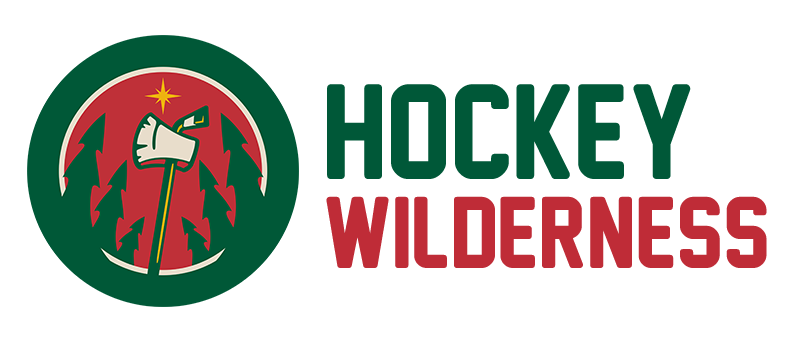
Let’s take the emotion out of it for just a bit.
No, I’m not talking about the Wild’s current skid, which has suddenly thrust them into a perilous position in the standings, threatening their once-locked playoff spot.
There will be plenty of time to write and read about the Wild’s end-of-season collapse should they fail to stave off the Calgary Flames for the Western Conference's final seed.
Instead, let’s venture one last time (hopefully) down the hypothetical road stemming from those famous Zach Parise and Ryan Suter buyouts in the summer of 2021. The Wild find themselves in the last year (finally) of the devastating dead cap hits from Bill Guerin’s decision nearly four years ago.
But what would the 2024-25 Minnesota Wild have looked like if they had not bought out the two franchise pillars? With the St. Louis Blues' recent ascension and Suter's surprisingly decent play at age 40, one has to wonder what this version of the Wild would have looked like had he and his pal, Parise, remained part of the team through the final season of those identical 13-year contracts signed in 2012.
Let’s lay some ground rules. We are not debating how both players would have impacted the locker room, as that was a driving force behind Guerin’s decision four summers ago -- and it was a warranted one at that. We will not revisit the past three years and how having Suter and Parise on the ice would have impacted their roster decisions.
This exercise differs from most others before it, where the reasons above were enough to justify their buyouts. Instead, let’s just focus on the final year, this year, and how keeping Suter and Parise would have shaped the Wild.
It’s an interesting place to land because when Guerin made the big decision in 2021, many pointed to the Wild needing to get out from under those contracts, a necessity due to their climbing ages. NHL commissioner Gary Bettman's cap recapture penalties (don’t get me started on those) gave good reason for Guerin to pull the trigger on one of the gutsiest GM decisions of the past decade.
Parise and Suter were in their mid-30s and experiencing lingering injury issues. Suter was recovering from a surgically repaired ankle, which limited his superb mobility. Parise’s constant back injuries were also slowing him down. Due to those cap recapture penalties, the Wild couldn’t afford either player to retire before the end of the 2024-25 season or risk being retroactively penalized on their cap.
But now that the final season is here, we can debate their effectiveness this year without guesswork. The season is nearly over, and each player’s current situation allows us to paint that discussion in a different light.
Let’s start with Suter, who is still an active player.
He's having a surprisingly good season, and the surging St. Louis Blues have overtaken the Wild in the standings. Winners of 11 straight, the Blues are suddenly the hottest team in the NHL, and Suter plays a big role for them. Even at 40, the rugged defenseman averages over 19 minutes of ice time per night, good enough for 4th amongst their defensemen.
Dom Luszczyszyn and Shayna Goldman of The Athletic continually update their “NHL Player Cards” to give an analytical view of every NHL player’s on-ice impact. According to their model, Suter has a net -4 rating this season, placing him 5th amongst all St. Louis blueliners. Not great, but solid for a bottom-pairing defenseman.
Jon Merrill and Zach Bogosian have been the Wild’s third pairing all year. Merrill and Bogosian players rate out as a -5 each, with Merrill providing above-average defense and Bogosian being well underwater on both ends of the ice.
Before we look at Suter replacing either player in this make-believe lineup, remember that contracts don’t really matter here. Sure, Suter’s cap hit under that original contract would have remained at a shade over $7.5 million. But his dead cap hit this year is almost $7.4M. Whether Suter had donned the forest green this year, he accounts for nearly the same cap hit regardless.
Bogosian accounts for $1.25M, while Merrill is slightly lower at $1.2M. If you want to compare either player to Suter directly, you must also account for Suter’s dead cap hit plus that player’s current cap hit.
So the question is, would you rather have Suter at age 40 performing arguably better than Bogosian at his original cap hit of $7.5M or Bogosian at his cap hit plus Suter’s dead cap, totaling $8.75M? You could easily argue that Suter, with $1.25M savings, would be meaningfully beneficial to a team that couldn’t add much by the deadline due to injuries.
The Merrill conversation is much more debatable. Merrill has been better than Suter defensively, even if his offensive numbers are dreadful. For a Wild team flush with offensive ability in their top-6, I have all the time in the world for anyone suggesting Merrill is a better on-ice fit for the Wild as currently constructed.
Still, how much better could the Wild be with a third pairing of Merrill and Suter and an extra $1.25M in cap space? It’s hard to tell. But one thing is clear: Suter has remained valuable to the Blues this season, and it’s evident he would have been a similar player in Minnesota. (Again, talking just on the ice, not in the locker room.)
The debate surrounding Parise is a little murkier. Parise is no longer in the NHL after appearing in just 30 games for the Colorado Avalanche last season. His situation is the perfect case study for why the Wild needed to buy him out previously. Parise's early retirement assuredly would have landed the Wild in cap-recapture hell.
But did they need to act in fear of the cap recapture penalties? Let’s assume he would have played for the Wild through last season, just as he strung out one last season for the Avalanche.
Being the Minnesota kid he is, was there a chance the Wild could have placed Parise on Long-Term Injured Reserve (LTIR) for the final year of his contract, just as so many other franchise icons had done for their team to give them cap flexibility in the final years of their careers? It’s shady business. Still, the NHL has allowed the likes of Shea Weber, Carey Price, and Robin Lehner to do the same thing for their clubs in recent memory.
Here is where our hypothetical takes a wild turn. If Suter were still on the Wild, it would not have changed much for this season’s team, even if I argue it would have been a net positive. But how different would they have looked if Parise had remained on the roster until this year and declared himself unable to physically play before the season started until his official retirement announcement in the summer of 2025?
Instead of another $7.5M in dead cap hits on the roster this season, the Wild could have banked his $7.5M in LTIR space and accrued it until the deadline. Maybe the Wild could have made an aggressive play at Vancouver’s duo of available superstars, Elias Pettersson and J.T. Miller? Or perhaps acquiring Mikko Rantanen from the Carolina Panthers when it was clear they wouldn't extend him?
It's a difficult hypothetical to imagine. However, one thing is certain: Suter and Parise justified the length of those original contracts in 2012. Each contributed players into either the final year of those deals or shortly before. And the case can now be made that the Wild might have benefitted in 2024-25 had they kept one or both players.
Regardless, the Wild need to move forward with the players they have. Because one of their old enemies in Suter seems to be charging towards the playoffs in St. Louis while the Wild fall further into standings peril.
Think you could write a story like this? Hockey Wilderness wants you to develop your voice, find an audience, and we'll pay you to do it. Just fill out this form.









Recommended Comments
Join the conversation
You can post now and register later. If you have an account, sign in now to post with your account.
Note: Your post will require moderator approval before it will be visible.